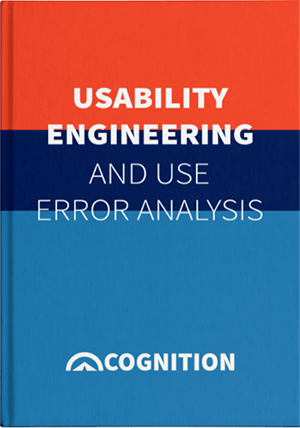Cognition Blog
Our blog navigates product development and compliance for the life science industry. Our solutions save time and money, delivering products with less risk.

Medical Device | Product Development | Risk Management | Design | Process | Documentation
By:
Sally Carter
September 29th, 2022
How a risk-based design approach provides safer and ultimately better quality products to market. Product designs are stronger when risk is inherently considered. Not everyone has the experience and instincts to naturally consider the critical factors required in a comprehensive approach. A solid process ensures risk is addressed consistently throughout product development by all of the stakeholders. It is not enough to intuitively consider risk when designing a product; decisions need to be articulated and documented - this documentation is used to support the design choices throughout the product's life.

Medical Device | Product Development | Risk Management | Webinar
By:
David M. Cronin
September 9th, 2022
Medical device development is a complex process, with a critical element focusing on risk management. The consequences of not managing risk properly can be catastrophic.

Subscribe to the blog and get this guide for free

cockpit | Medical Device | Compass | Change Management
By:
Dale Gallaher
October 19th, 2021
“The Only Constant in Life Is Change.”- Heraclitus Managing information goes straight to the heart of managing change. Why? Because without a rationale, checks and balances, evidence, and assurance of safety, information change – if left unchecked – can potentially lead to hazardous situations. This is especially critical in the intensely regulated medical device industry.

Medical Device | Product Development | Risk | Risk Management
By:
David M. Cronin
September 28th, 2021
In the highly regulated world of medical device manufacturing, the relentless requirement to minimize and mitigate risk places a huge onus on design, development, and manufacturing teams. That’s why companies, large and small, are looking for software solutions to help ensure consistency and objectivity in the creation, auditing, and monitoring of critical risk management processes.

Medical Device | Product Development | reusability
By:
Bradley Sylvestre
September 14th, 2021
Key takeaway: The ability to reuse product data can dramatically reduce the time taken to design, gain regulatory approvals, and ultimately bring new medical devices to market. Time equates to money in any business, and in the world of medical device design and manufacturing, that can mean BIG numbers! Depending on the route taken, following FDA regulations, the average cost to bring a medical device to market through the Premarket Approval pathway is $94 million. The less intensive 510(k) process averages out at $31 million.

design controls | Medical Device | Product Development | Risk | Risk Management
By:
David M. Cronin
August 17th, 2021
Using unstructured tools such as Word and Excel when doing risk management for medical devices could result in harm to a patient. Why? Because many medical devices are complex, with hundreds to thousands of inter-related design inputs/outputs, testing, and risk management data. Managing that amount of data manually is nearly impossible when using tools like Word and Excel...

Medical Device | Product Development
By:
David M. Cronin
October 16th, 2020
Systems engineering should be used more often in medical device product development. This may be a strong statement, but it can be transformative for device development through decreased development costs, streamlining of interactions with the FDA, and reduced time-to-market. We would like to address this through a series of articles on systems engineering role in Medical Device Product Development of which this is the first.

Medical Device | Product Development | Compass
By:
Ansgar Liening
August 27th, 2020
Often in medical device product development, functions exist in silos. Risk, requirements, and test management functions often exist separately, on their own - different systems, different teams, different objectives. Yet, the data related to these functions are both continuously changing and highly dependent on one another. Some type of process is needed to (1) manage the effect of changes across all three systems and (2) provide evidence of a process for notified bodies if and when needed.

Medical Device | Risk | Risk Management
By:
Ben Higgitt
August 11th, 2020
SEPARATE RISK MANAGEMENT AND FMEA FOR BETTER MEDICAL DEVICE DEVELOPMENT. The below is an excerpt of the article originally published on MDDI. FMEA (Failure Mode and Effects Analysis) is utilized to identify potential failure modes in the design or manufacturing of a product. But risks associated with medical devices are not created by failures alone. A product may never fail, but there are still potentially many other risks.

info@cognition.us
1 (781) 271-9300
24 Hartwell Avenue,
Lexington, Massachusetts 02421
©2026 Cognition Corporation | Privacy Policy